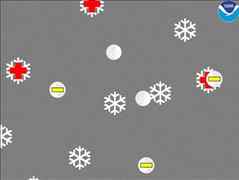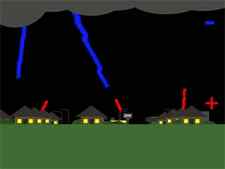Color the Lightning Bolt. Grab your favorite coloring tools and add color to your thunderbolt drawing! You can color your lightning bolt drawing bright yellow or light blue.
How to Draw a Lightning Bolt


Let’s start drawing a lightning together! In this tutorial, you will learn how to draw a lightning bolt very easily, even for beginner artists.
Lightning is an electrical discharge that got its name thanks to the impressive light effect that occurs when it appears. Lightning occurs when the air between two clouds or between a cloud and the ground is charged with an electrostatic charge of too much force.
Under the influence of electric fields, charges begin to move so fast that in the blink of an eye, an electrical discharge runs through the air between the positive and negative clouds or between the cloud and the ground, creating a dazzling light effect that we call lightning or a lightning strike!
Also, when a lightning strike occurs, we hear a very loud sound—this is due to the shockwave that occurs when the air, heated by the electric current, expands.
The process of drawing lightning is very simple, as we need to draw a cartoonish lightning using straight lines. Let’s start this exciting process!
Time needed: 25 minutes
How to Draw a Lightning Bolt

-
Draw the diagonal. Begin by drawing the diagonal line for the top of the lightning.
Add the horizontal line. Add the next detail using the horizontal line.
Add the bottom line. Following the example from the step, depict the bottom diagonal line.
Finalize the Lightning Bolt shape. Now, to complete the shape of the lightning bolt, you need to draw the second edge. Draw it with a zigzag line as shown in the example. The bottom of the lightning should be pointed.
Color the Lightning Bolt. Grab your favorite coloring tools and add color to your thunderbolt drawing! You can color your lightning bolt drawing bright yellow or light blue.
You have completed drawing the lightning strike! Congratulations! To create such a drawing, basic drawing skills and attention to detail are required. Practice and experimentation will help you improve and achieve new results in drawing. Try your hand at drawing animals or cars!
What causes lightning?
So, do thunderclouds have rubber shoes? Not exactly, but there is a lot of shuffling going on inside the cloud.

Click image for animation.
Credit: John Jensenius
Lightning begins as static charges in a rain cloud. Winds inside the cloud are very turbulent. Water droplets in the bottom part of the cloud are caught in the updrafts and lifted to great heights where the much colder atmosphere freezes them. Meanwhile, downdrafts in the cloud push ice and hail down from the top of the cloud. Where the ice going down meets the water coming up, electrons are stripped off.
It’s a little more complicated than that, but what results is a cloud with a negatively charged bottom and a positively charged top. These electrical fields become incredibly strong, with the atmosphere acting as an insulator between them in the cloud.
When the strength of the charge overpowers the insulating properties of the atmosphere, Z-Z-Z-ZAP! Lightning happens.
How does the lightning “know” where to discharge—or strike?
The electric field “looks” for a doorknob. Sort of. It looks for the closest and easiest path to release its charge. Often lightning occurs between clouds or inside a cloud.
But the lightning we usually care about most is the lightning that goes from clouds to ground—because that’s us!
As the storm moves over the ground, the strong negative charge in the cloud attracts positive charges in the ground. These positive charges move up into the tallest objects like trees, telephone poles, and houses. A “stepped leader” of negative charge descends from the cloud seeking out a path toward the ground. Although this phase of a lightning strike is too rapid for human eyes, this slow-motion video shows it happening.
As the negative charge gets close to the ground, a positive charge, called a streamer, reaches up to meet the negative charge. The channels connect and we see the lightning stroke. We may see several strokes using the same path, giving the lightning bolt a flickering appearance, before the electrical discharge is complete.

Click for larger animated image!
What causes thunder?
In a fraction of a second, lightning heats the air around it to incredible temperatures—as hot as 54,000 °F (30,000 °C). That’s five times hotter than the surface of the Sun!
The heated air expands explosively, creating a shockwave as the surrounding air is rapidly compressed. The air then contracts rapidly as it cools. This creates an initial CRACK sound, followed by rumbles as the column of air continues to vibrate.
If we are watching the sky, we see the lightning before we hear the thunder. That is because light travels much faster than sound waves. We can estimate the distance of the lightning by counting how many seconds it takes until we hear the thunder. It takes approximately 5 seconds for the sound to travel 1 mile. If the thunder follows the lightning almost instantly, you know the lightning is too close for comfort!




